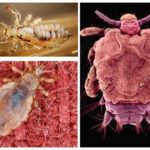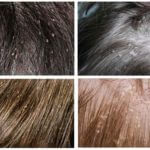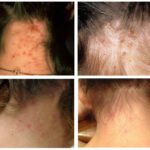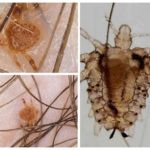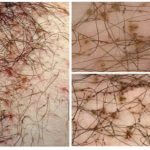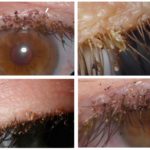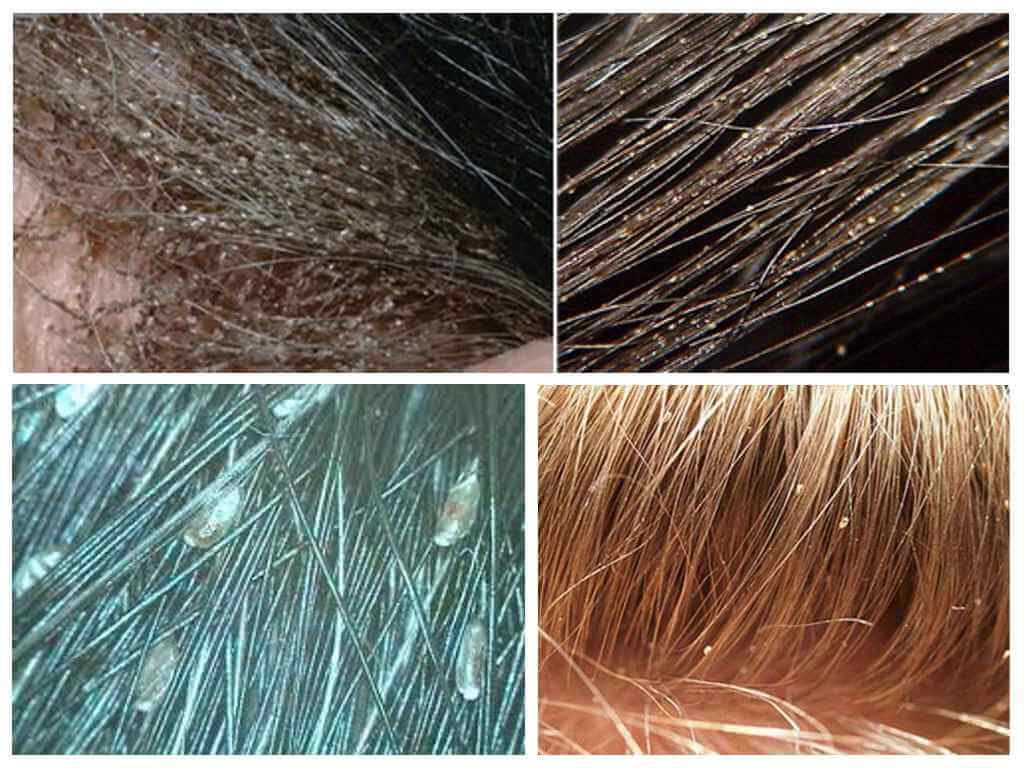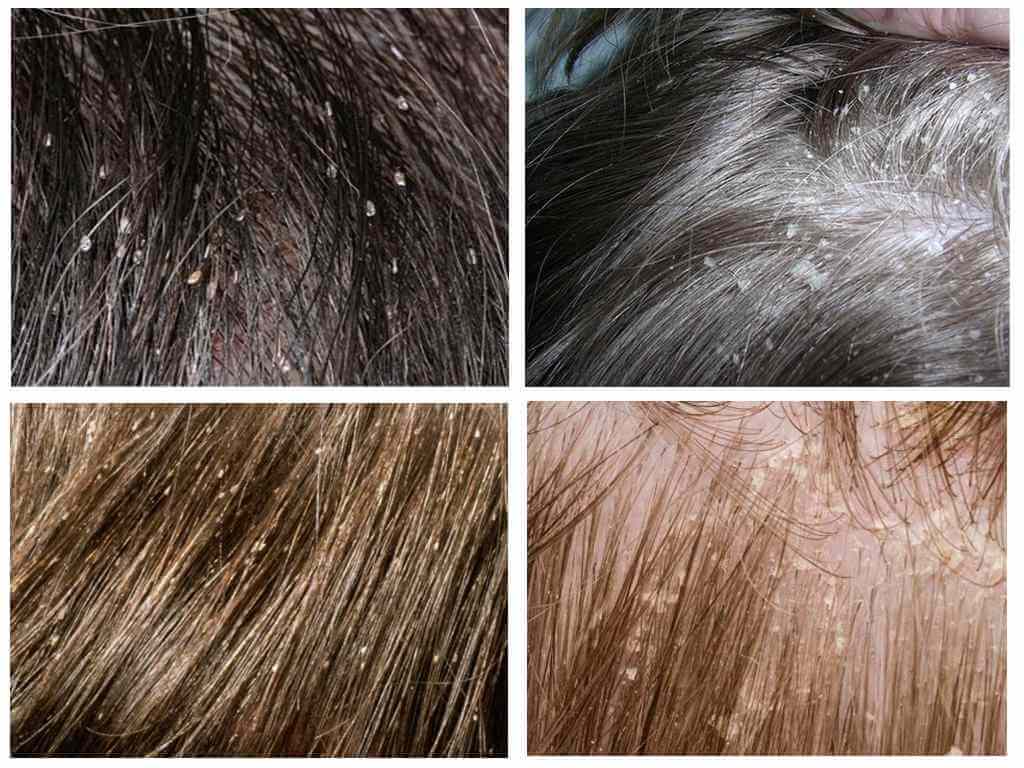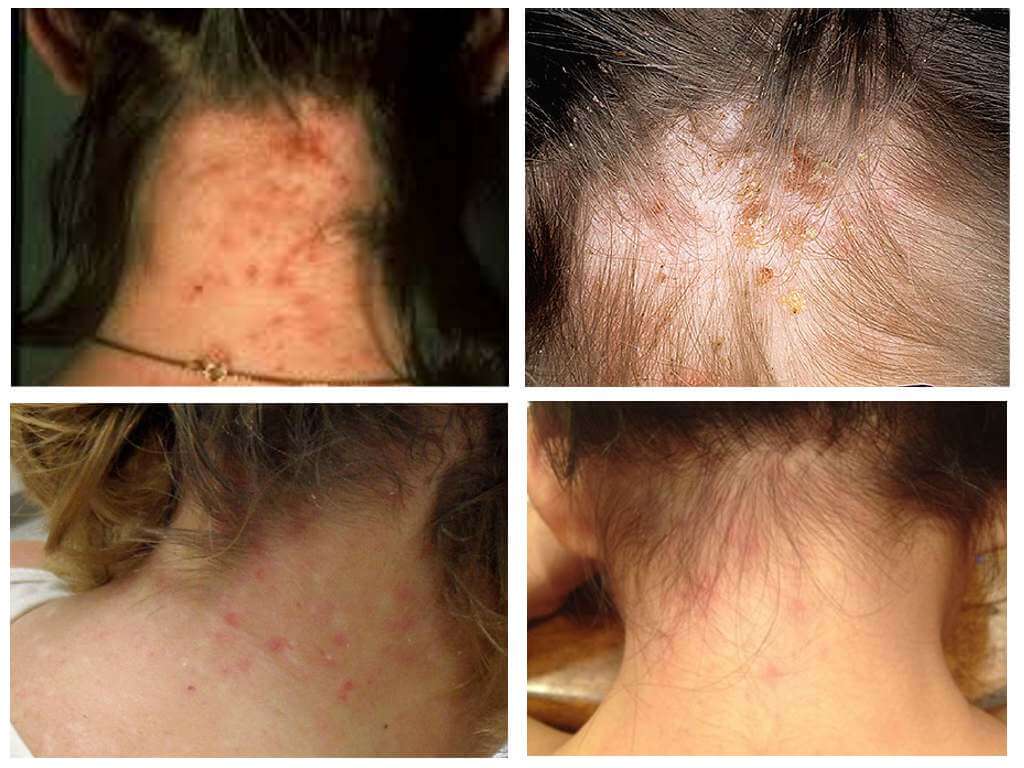How lice and nits look on a person’s head
Content
- Types of lice
- Head lice
- Lice in hair
- Lice and dandruff
- Pediculosis
- Pubic lice
- Pubic lice
- Lice on eyelashes
Lice and nits on the human body is an unattractive phenomenon, but no one is immune from their appearance. Preventive measures can minimize the risk of infection, but they still do not give 100% guarantees.Most often, parasites are detected by chance, or else when their settlements become numerous. Knowing how the lice and their offspring look like, it will be possible to take timely measures to destroy them and not allow the parasites to use their own body as a food item.
What kind of lice does a person have?
The human louse is an insect from the suborder of the eel of the order. There are 2 morphological types:
- head lice - Lice live in the hair, voluntarily never leave their wearer;
- body lice - live in the folds of clothes, use a person as a power source, they are not permanently on it, after saturation they take refuge in places of their settlement.
There is another subspecies of human parasites - pubic louse (ploshchitsa). Its name accurately reflects the localization. It is distinguished from its relatives by the special structure of the limbs. Depending on the type of insect pediculosis accordingly, it can also be clothes, pubic, head or mixed - with simultaneous infestatsii several types of parasites. Below are photos of human lice.
Head louse
Parasites live exclusively in human hair: on the head, beard, mustache, and eyebrows. They can not fly, jump. All their motor capabilities are limited to crawling. For their miniature sizes, head louses move quickly enough and overcome 10 to 20 cm per minute.
Appearance
Adult female sizes do not exceed 4mm. The males are slightly smaller - the maximum body length is 3 mm. In view of the tiny dimensions, the structure of the body can only be viewed enlarged under a microscope or with a magnifying glass.
Parasites have a transparent, flat, elongated body. Hungry individuals are grayish-brown color. In the process of feeding, it becomes red, almost scarlet. If you watch the parasite at the time of absorption of food, you can see how the stomach is stretched and the body becomes more rounded.
Interesting!
Head lice - very bloodthirsty individuals. They feed from 2 to 4 times a day, and the larvae up to 8 times per day. The female drinks 0.7 mg of blood.
3 pairs of legs with sharp claws are attached to the chest, thanks to which the blood-sucking insect moves freely in the hair. Spiracles are also located on this part of the body.On the head are simple eyes and antennae - organs of smell.
Mouth apparatus piercing-sucking type is represented by the following organs:
- a hole with chitinous hooks, through which the louse is attached and held onto the skin;
- stiletto needles for piercing;
- the tube, which is like a pump, draws blood from the mouth into the intestinal tube.
Interesting!
Because of the short proboscis, the insect is forced to immerse its head in the wound, therefore, during the meal, it is in a perpendicular position relative to the skin.
The nuances of parasitism
A detailed study of photos of lice in the hair can be seen that they are located mainly at the base of the hair follicles, that is, closer to the power source. These parasites are one of the few that remain loyal to their wearer. Only a cardinal decrease in temperature caused by the death of a person forces lice to leave their homes and go in search of a new food item.
The optimal temperature for lice is 27-28 ° C. With a decrease to 10 ° C, the vital processes slow down, reproduction stops. Subzero temperatures above 45 ° C are disastrous. Without food head lice can live no more than 2 days. For the same amount of time, they preserve their vital activity when they are in the water.
On a note!
There is a misconception that head lice appear only in people who rarely wash their hair. However, the appearance of bloodsuckers is not related to the frequency of hygienic procedures, since they do not feed on sebum or dead cells of the epidermis. Moreover, it has been proven that lice can move more comfortably in clean hair.
What the nits look like
The genitals are located on the abdomen. In the female, they are located in the ninth segment of the forked abdominal cavity and are called gonopods. In males, the sexual organ is represented by chitin stripes. After mating after 2-3 days, the female begins to lay eggs by 5-6 pieces per day. During her 35-45 day life, she manages to give life to 170-200 individuals.
Lice eggs are called nits. They are tiny size and do not exceed 1 mm. In the photo you can see that they are an oblong capsule with a lid. The female sticks nits to the hair with the help of a sticky substance that is released from the genopods. After 7-10 days under favorable conditions, the lice larvae leave the capsule, and dry nits and remain hanging on the hair. Externally hatched individuals do not differ about their parents, except for sizes.
On a note!
Distinguish nits from dandruff easy enough. The eggs of the lice are visually the same size, when pressed on the nail plate, a characteristic creak appears. Dandruff is a dry dead cell, which can be of various sizes.
Juveniles begin to feed heavily, undergo 3 molts and in 6-10 days turn into mature individuals ready for breeding. Increase, decrease in temperature, dryness, insufficient moisture slow down the development of the larvae. Below are photos of nits on hair and dandruff.
Signs of head lice
During the meal, the parasite injects an enzyme that prevents blood clotting and an anesthetic substance, thanks to which louse bite not accompanied by pain, and there is only a slight tingling sensation. Subsequently, the following appear headache symptoms:
- severe itching;
- pustules, triggered by combing;
- insomnia;
- irritability;
- swelling of the lymph nodes;
- in cases of long-term infection, the appearance of an unpleasant odor, purulent masses, sticking of hair, crusts, dry nits.
Detect irritant can be visual inspection of the skin of the head. Without a magnifying glass, it seems that the hair is littered with dandruff. However, armed with a magnifying glass, you can see the nits along the entire length of the hair and crawling adults. In the photo of pediculosis, occipital, temporal, neck, behind the ears are most susceptible to bites.
On a note!
Accumulation of more than 75,000 lice in the hair can be fatal. The psychological and neurological factor plays a significant role in this.
Pediculosis, like other diseases, needs treatment. To get rid of lice, conduct hygiene procedures with anti-pediculosis drugs and subsequent combing dead individuals and nits. Significantly simplifies the process. comb against lice.
Feedback
After her daughter returned from the summer camp, she noticed that she had dandruff. Sinned on a new shampoo, but after the change of detergent there were no changes. We went to see a dermatologist, and he determined that it was lice that had already managed to breed and lay eggs - nits, which we took for dandruff. For pediculosis treatment purchased Nuda remedy and processed the head in accordance with the instructions. A week from the lice and nits, there was no trace.
Anna, Kaliningrad
Pubic lice
Pubic lice in humans affect intimate areas, the area of the anus, armpits, abdomen, chest, eyelashes. They are transmitted through physical, sexual contact, through bedding and bedding, and the risk of infection with pubic lice in saunas and baths is not excluded.
What do they look like
Small bloodsuckers can not boast of large dimensions. The size of the female barely reaches 1.5 mm, male 1mm. Body shape is more rounded in comparison with the head parasite. On the abdomen there are villi, and claws are more developed and twisted, so that they can be attached in the hair with a triangular cross-section. Ploshchitsy lodge mainly in the pubic zone, because they are attracted to the secretion of apocrine glands.
In the photo of pubic lice it can be seen that the color of parasites is nondescript gray shades. They feed twice a day, drinking 0.1 mg of blood. After saturation, they get a brighter almost orange color.
Adults fasten to the base of the hair and quite often spend the rest of their life on it, due to which it is possible to determine the time of infection by hair regrowth. The life cycle is 17-25 days.
Optimum breeding conditions
For laying eggs, the female should eat regularly and live in a comfortable environment for her + 30 ° С. Without food, an adult can live no more than a day. But being outside the human body, it is able to fall into hibernation and stay in a “sleepy” state for several months.
On a note!
Pubic lice retain vital activity in a 20-30 cm layer of sand up to 4 days, in water up to 2 days.
During her life, the female lays 50-60 eggs. Nits are attached to the base of the hair and as it grows they rise above the skin. The development of larvae occurs as in other species of this family. In the photo of lice and nits in the groin area, you can see in detail how pediculosis looks in the pubic area.
Symptoms of pubic lice
The incidence of pubic parasites is called pubic lice or phthiriasis. In most cases, the disease is sexually transmitted, therefore recognized as venereal. If the infection occurred through sexual contact, then head lice is often just one of the components of the venereal “bouquet”, so treatment should be carried out after consulting a specialist.
During a bite, a pubic louse injects an enzyme,which prevents blood coagulation and dilutes it, thereby destroying hemoglobin and bluish spots of up to 15 mm in size appear at the site of bites. When pressed, they do not disappear. The following symptoms also appear:
- the appearance of itching;
- brown and black dots on underwear - traces of insects;
- with a strong scratching the occurrence of purulent wounds, blisters, peeling;
- development of dermatitis.
Sexual contact with a carrier of blood-sucking insects, which people call obscene words, is by no means the only way to infect lice. Nits are well fixed on clothes, tissues, therefore women, men and even children are equally at risk of infestation by lice. Contribute to this:
- joint sleep with an infected;
- use of towels, clothes, bedding;
- visiting public places: beaches, baths, saunas, swimming pools.
On a note!
In children, phthyriasis usually occurs. on eyelashes or brows.
Feedback
I am rather ashamed to talk about this, but I want to warn others to avoid my mistakes. I want to tell you how our joint holiday with my wife on the Black Sea coast almost ended in divorce. I have a habit of basking in the sun on the hot sand.I basically do not use litter, I want to be closer to nature, to feel its naturalness. A few days after the active sunbathing, began to feel itching in the intimate area. At first, I didn’t attach any importance to it, maybe it’s my skin that is so sensitive to salt water. Then he began to notice that his wife, too, was scratching this notorious zone.
Upon returning home, the husband went to the gynecologist and returned, to say the least enraged. She started accusing me of infidelity and that I rewarded her with specific tricks. But I was 100% sure of myself, especially since adultery contradicts my life credo. We went together to the reception to the venereologist. He found pubic lice and me. The doctor asked in detail about the last places to visit and came to the conclusion that 99% of the infection was caused by me, but only indirectly. It is likely that I picked up parasites, wallowing in the sand. So it's impossible to predict where do lice come from.
Alexander, Bobruisk
Treatment of pediculosis is carried out under the supervision of a doctor or at home through a series of activities:
- shaving hairline greatly facilitates the process of getting rid of bloodsuckers, but is not a prerequisite;
- Since the nits on the hair are attached with a sticky substance, a weak vinegar solution;
- affected areas are treated with appropriate sprays, shampoos, ointments, lotions: Nittifor, Medyfox, VedaPedilin Spey-Paks;
- disinfection of bedding, underwear.
With timely treatment, the prognosis is favorable, bloodsucking insects and nits can be eliminated in several procedures.

